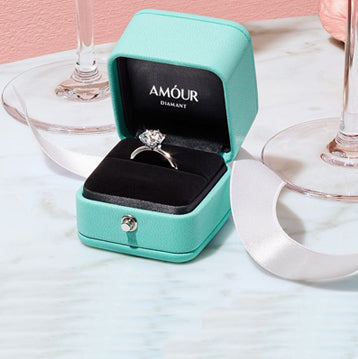The Ultimate Guide to Lab-Grown Diamonds

Lab-grown diamonds, also known as man-made or cultured diamonds, have been gaining popularity in recent years as a more ethical and sustainable alternative to traditional mined diamonds. These diamonds are created in a laboratory setting using advanced technology, and are virtually identical to natural diamonds in terms of chemical composition, physical properties, and appearance.
What Are Lab-Grown Diamonds?
Lab-grown diamonds are created using one of two methods: high pressure, high temperature (HPHT) and chemical vapor deposition (CVD). Both methods involve replicating the conditions that occur in the Earth's mantle, where natural diamonds form over millions of years. In the HPHT method, a small diamond seed is placed in a chamber with a mixture of gases, including carbon. The chamber is then heated to extremely high temperatures and placed under immense pressure, causing the carbon to bond to the diamond seed and form a rough diamond crystal. This crystal is then cut and polished to create a finished diamond. The CVD method involves using a plasma torch to vaporize a carbon-containing gas, such as methane. The carbon atoms then deposit onto a substrate, forming a diamond crystal. This crystal is also cut and polished to create a finished diamond.

The Benefits of Lab-Grown Diamonds
Lab-grown diamonds offer a number of benefits over traditional mined diamonds. For one, they are more environmentally friendly and sustainable. Diamond mining can cause significant damage to ecosystems and habitats, and can also lead to human rights violations. Lab-grown diamonds, on the other hand, are created in a controlled laboratory setting and have a much smaller environmental footprint. Additionally, lab-grown diamonds are typically less expensive than mined diamonds. This is because they do not require the extensive mining and extraction processes associated with natural diamonds. They are also often of higher quality, as they are created under controlled conditions and can be carefully monitored throughout the growth process.

How to Choose a Lab-Grown Diamond
When shopping for a lab-grown diamond, it's important to consider the same factors as you would when buying a mined diamond. These include the diamond's cut, clarity, color, and carat weight. The cut of a diamond refers to how well it has been shaped and polished. A well-cut diamond will have a good symmetry and will reflect light well. Clarity refers to the presence of inclusions, or internal flaws, in the diamond. A diamond with fewer inclusions will be more valuable. Color refers to the presence of any color in the diamond. A colorless diamond is the most valuable and rare. Carat weight refers to the weight of the diamond. Larger diamonds are more valuable. You should also consider the certifying agency and the lab-grown diamond's certification. The most reputable certifying agencies are the International Gemological Institute (IGI), the Gemological Institute of America (GIA), and the American Gem Society (AGS). It is important to ensure that the lab-grown diamond is certified by one of these agencies.
graph LR
A[HPHT or CVD] --> B[Diamond seed or Carbon-containing gas]
B --> C[Rough diamond crystal]
C --> D[Cut and polished diamond]
D --> E[Certification by reputable agency]
E --> F[Consumer]
Conclusion
Lab-grown diamonds are a sustainable, ethical, and often more affordable alternative to traditional mined diamonds. With the ability to replicate the conditions that occur in the Earth's mantle, the lab-grown diamonds are virtually identical to natural diamonds in terms of chemical composition, physical properties, and appearance. When shopping for a lab-grown diamond, consider the diamond's cut, clarity, color, and carat weight, and make sure it is certified by a reputable agency.




































